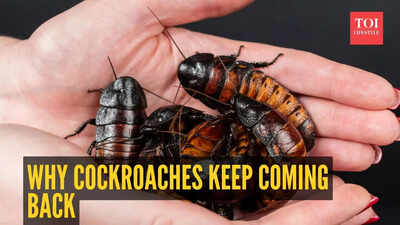ARTICLE AD BOX

Cockroaches are one of the most common and unwelcome visitors in homes, especially in Indian cities. No matter how clean we keep our kitchens or floors, these tough insects somehow manage to survive and multiply.
They’re more than just annoying; they can spread germs and even trigger allergies or asthma in some people.Over time, many ways to get rid of them have become popular, but not all of them work equally well. To really deal with cockroaches, it helps to understand how they live, where they hide, and the best ways to target them.This guide looks at all the effective treatments for cockroaches. From easy DIY tricks to professional solutions, it explains the steps you can take to keep your home truly roach-free.Why cockroaches are hard to controlCockroaches are not ordinary pests; they are highly adaptable and difficult to eradicate.Rapid multiplication: A single cockroach can give rise to hundreds within a few weeks. Treating only visible roaches is rarely enough, as eggs remain hidden and hatch later.

Nocturnal lifestyle: Most cockroaches come out at night, hiding during the day in cracks, drains, and behind appliances. Spotting them during the day is usually a sign of a serious infestation.
Minimal food and water requirements: Cockroaches survive on very little. Even small crumbs or damp spots can support their growth, making complete elimination challenging without targeted interventions.Common reasons treatments fail: Many households rely on sprays, home remedies, or sticky traps. While these may offer temporary relief, they often fail to provide long-term results. Key reasons include:Inaccessible hiding spots: Sprays usually reach only open areas, leaving hidden colonies untouched.

Eggs remain untreated: Young cockroaches continue to hatch if eggs are not addressed.Inadequate coverage: Homes vary in structure; generic solutions often miss critical infestation zones.Identify hotspots through monitoring and traps.Apply gel baits and insecticides in targeted areas.Use IGRs to prevent reproduction.Seal entry points to stop migration from outside.Maintain cleanliness to discourage future infestations.Conduct regular follow-ups to ensure effectiveness.Why IPM works: It addresses both visible populations and hidden colonies, reducing recurrence and promoting a healthier environment.Daily habits to support cockroach controlEven after treatment, daily practices play a vital role:

Sweep and mop floors regularly.Store food in airtight containers.Dispose of garbage daily.Keep kitchen and bathroom areas dry.Avoid clutter, especially cardboard and unused boxes.Monitor traps to detect early signs of returning roaches.Consistency with these habits prevents new infestations from taking hold.When professional help is necessaryDIY treatments may not always suffice. Consider professional services when:Cockroaches are active during the day (indicating a large infestation).Infestations persist despite repeated cleaning and treatments.Multiple rooms are affected.Cockroaches are entering from neighbouring apartments.Professional interventions use structured strategies combining baits, IGRs, inspections, and entry-point management for comprehensive elimination.

A stepwise, practical approachCockroach control is not about one-time fixes; it requires a planned, stepwise strategy:Maintain hygiene and remove food/water sources.Apply gel baits, traps, and insecticides strategically.Use IGRs to prevent reproduction.Seal all potential entry points.Monitor and maintain cleanliness to prevent reinfestation.By combining these treatments, households can significantly reduce cockroach populations, making homes cleaner, safer, and healthier for residents.

 2 hours ago
4
2 hours ago
4









 English (US) ·
English (US) ·